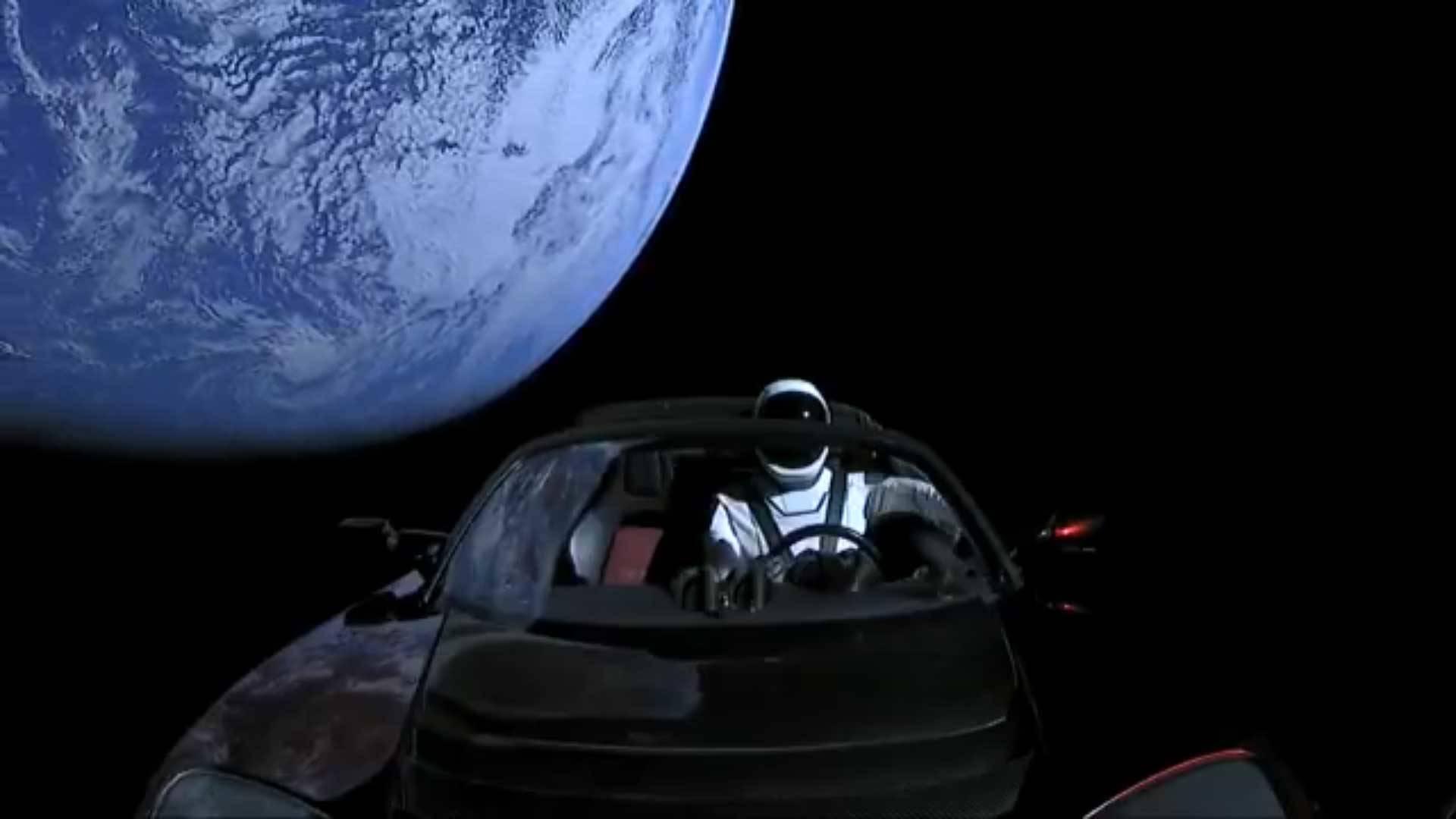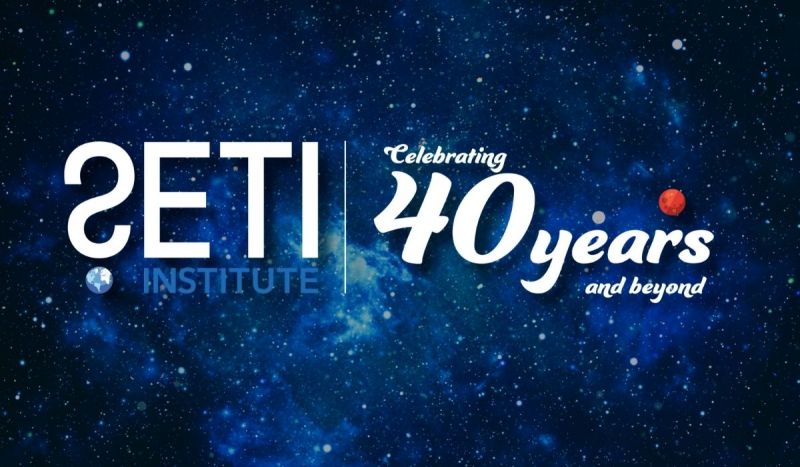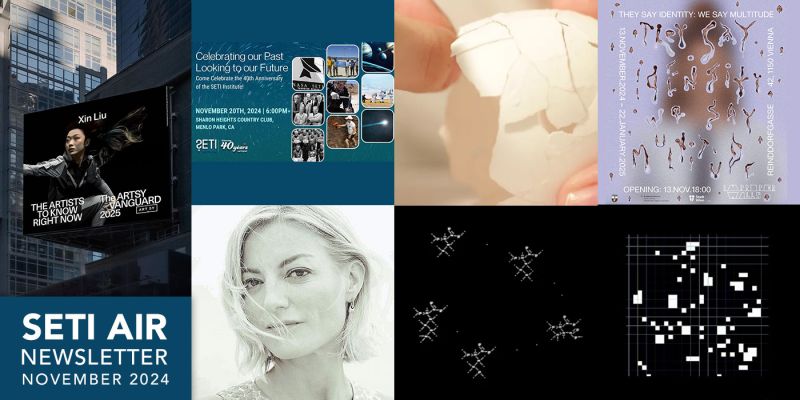
Although the convertible's dark-cherry paint job may not hold up eternally against ultraviolet radiation and micrometeroids, as the SETI Institute's Seth Shostak recently told NBC news, such exposure,
“…would be unhealthy for humans but will only very slowly degrade the Roadster and its rider. Indeed, this car is surely destined to rack up billions of miles before disaster hits — if it does." (NBC News)
That's good news for Spaceman and his Roadster, and also for those interested in planetary protection such as SETI Senior Research Scientist Margaret Race, who was interviewed by Seth at the Institute in a recent Facebook Live event.
- NBC News: Here's what will happen to the Tesla that SpaceX shot into space
- GeekWire: Good news for Starman: Spacefaring Tesla Roadster will miss Mars and asteroids
- Facebook Live: Planetary protection with Margaret Race and Seth Shostak
The key to searching for life on Mars is knowing where to look, which includes determining where and when water was present in its geological history. In an analysis published in the journal Nature Astronomy, SETI Institute and NASA's Ames Research Center scientist Janice Bishop and colleagues investigate the presence of clays on the surface of Mars. In a news release regarding the publication, Bishop says, “We realized that in order to better constrain the early Martian climate, we needed to understand the formation conditions of Martian clays” (SETI.org). Mapping and analyzing the clay has allowed the authors to propose an explanation for these clay formations that compliment current climate models and geological observations, further refining our understanding of the red planet.
Want to hear more about Janice Bishop's work? Be sure to tune in on March 1st for SETI's weekly Facebook Live event, as we interview Janice about this exciting research!
- SETI.org: New Studies of Clay Formation Provide Clues about Early Martian Climate
- UPI.com: Surface clay survey offers clues to early Martian climate
- Nature Astronomy (abstract): Surface clay formation during short-term warmer and wetter conditions on a largely cold ancient Mars
The scientific community continues to discuss means of preventing the contamination of Mars with microbes from Earth, and vice versa – but how could we be sure of the presence of decidedly non-terrestrial life on the red planet even if we did find signs? How do we avoid mistaking microbial critters from earth for honest-to-goodness aliens? In an interview with Space.com, the SETI Institute's own senior scientist and former NASA Planetary Protection Office head, John Rummel, offers some suggestions:
“I would say, if one is faced with tantalizing evidence of a possible 'find' of ancient life on Mars, one's first consideration would be to reaffirm the interpretation of the evidence already gained, and to conduct other tests that might support or refute that interpretation." (Space.com)
Considering the potential impact the actual discovery of life beyond Earth would have, defining a clear process for vetting and announcing such a discovery is almost as important as the find itself.
What's in a name? According to the SETI Institute's Jill Tarter (once head of NASA's SETI program and former director of the Institute's Center for SETI Research):
"We need to be very careful about our language," Tarter said during a presentation at the committee meeting on Jan. 18. "SETI is not the search for extraterrestrial intelligence. We can't define intelligence, and we sure as hell don't know how to detect it remotely. [SETI] … is searching for evidence of someone else's technology. We use technology as a proxy for intelligence.
[The acronym] 'SETI' has been problematic in history, and we should just drop [it] and just continue to talk about a search for technosignatures." (Space.com)
Whatever your preferred acronym, with unprecedented advances being made in detection technologies and data analysis, this is an exciting time for the field.
- Space.com: 'Search for Extraterrestrial Intelligence' Needs a New
- Name, SETI Pioneer Says
- The Inquisitr: SETI Expert: ‘Search For ExtraTerrestrial Intelligence' Needs New, More Accurate, Name
An opinion piece in Scientific American argues for the inclusion of technosignature detection – such as the data collection and research conducted by the SETI Institute's Allen Telescope Array – in NASA's research portfolio, supported and funded alongside its ambitions in the field of astrobiology. Given the importance of the question, “are we alone?”, it certainly seems like there is a compelling argument to be made that the search for life must include a thorough – and therefore, adequately funded – investigation into the possibility of intelligent life beyond Earth leaving detectable signs. Despite this, a great deal of SETI research relies heavily on private support. The author contends:
“… there is no a priori reason to believe that biosignatures should be easier to detect than these technosignatures. Indeed, intelligent, spacefaring life might spread throughout the galaxy, and therefore be far more ubiquitous than planets that have only microbes. Life might be much easier to find than the NASA strategy assumes.” (Scientific American)
Beyond the obvious excitement such a discovery would bring, there is enormous scientific benefit to be found in the research itself, which has already led to important breakthroughs in observations of astrophysical phenomena and radio instrumentation.
- Scientific American: NASA Should Start Funding SETI Again
The SETI Institute's senior astronomer, Seth Shostak, and CEO Bill Diamond joined Doug Vakoch of METI (Messaging Extraterrestrial Intelligence) for a panel discussion at the recent Space Tech Summit. Listen in to Planetary Radio to hear them converse about Fermi's Paradox and other challenging topics posed by the Planetary Society's Mat Kaplan.
- Planetary Radio: Space, SETI, the Singularity and Shostak
Last week's episode, Creative Brains, looks to understand how human creativity has reshaped the world and whether AI could ever take over the domain of creativity. This week, Bacteria to the Future takes a look at antibiotics, how they've become part of our food chain and the impact.
Last week Margaret Race, SETI Institute senior scientist and expert on planetary protection, talked to Seth Shostak about the possible implications of space contamination in the wake of the SpaceX Falcon Heavy launch.
All past Facebook Live videos can be seen on the SETI Institute's Facebook page at https://www.facebook.com/SETIInstitute/.
- American Association for the Advancement of Science: February 15-19, Austin, TX Edna DeVore, Director of Education at the SETI Institute, will be formally awarded a fellowship recognizing her contributions to astronomy education
- SETI Talks: February 21, Menlo Park, CA SETI Institute data scientist Jeff Smith and Google senior research software engineer Chris Shallue will discuss exoplanet detection using AI
- MarsFest: February 23-25, Death Valley National Park, CA SETI Institute scientist Rosalba Bonaccorsi will participate in the 5th annual MarsFest with activities and educational opportunities about our solar system
- Rencontre du Vietnam on Exoplanetary Science: February 25 – March 2, Quy Nohn, Vietnam Franck Marchis will present
- Osher Life Long Learning Institute: March 2, Berkeley Institute Seth Shostak and Margaret Race to discuss Big Trends in Astronomy
- Massachusetts Institute of Technology: March 10, Cambridge, MA SETI Institute Senior Scientist Franck Marchis will participate in Beyond the Cradle 2018: Envisioning a New Space Age
- World's Fair Nano: March 10-11, San Francisco, CA Seth Shostak will be a featured speaker
- National Science Teachers Association: March 15-18, Atlanta, GA SETI Institute Acting Director of Communication Pamela Harman will lead a workshop
- City College of San Francisco: March 21, San Francisco, CA SETI Institute senior scientist Franck Marchis will participate in a star party
- California Academy of Sciences: April 12, 2018 Seth Shostak to participate in the monthly Nightlife talk
- Palo Alto Jewish Community Center, May 2, Palo Alto, CA Seth Shostak to of offer SETI Talk presentation
- Association of Computer Professionals in Education: May 4, Welches OR Seth Shostak to participate in annual conference
- The Villages: May 8, San Jose, CA Seth Shostak to offer talk about SETI





